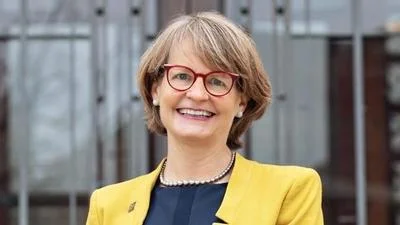Laurie McCauley Provost and Executive Vice President for Academic Affairs | University of Michigan-Ann Arbor
Laurie McCauley Provost and Executive Vice President for Academic Affairs | University of Michigan-Ann Arbor
A handful of common surgical procedures account for large shares of all opioids dispensed after surgery in children and adults, according to two studies recently published by researchers at the University of Michigan. The studies, published this week in Pediatrics and JAMA Network Open, report that the top three procedures for children ages 0-11 account for 59% of opioids dispensed after surgery (tonsillectomies and adenoidectomies 50%, upper extremity fractures 5%, and removal of deep implants 4%). Among those ages 12-21, the top three procedures account for about a third of post-surgery opioid prescriptions (tonsillectomies and adenoidectomies 13%, knee arthroscopies 13%, and cesarean deliveries 8%).
For adults ages 18-44, C-sections account for the highest share of opioids dispensed post-surgery (19%), followed by hysterectomies (7%) and knee arthroscopies (6%). Among those ages 45-64, four of the top five procedures were orthopedic procedures, collectively accounting for 27% of total opioid prescriptions dispensed after surgery.
“Our findings suggest that surgical opioid prescribing is highly concentrated among a small group of procedures. Efforts to ensure safe and appropriate surgical opioid prescribing should focus on these procedures,” said Kao-Ping Chua, lead author of the study in Pediatrics, assistant professor at the U-M Medical School and School of Public Health, and co-director of the Research and Data Domain at the U-M Opioid Research Institute.
To conduct the study, the researchers developed an algorithm to identify 1,082 major surgical procedures using procedure codes, a medical classification tool used to identify specific surgical, medical or diagnostic interventions. The algorithm was then applied to identify privately and publicly insured children and adults undergoing surgery from Dec. 1, 2020 through Nov. 30, 2021.
The information was organized through a novel system developed by the study team, which allowed them to connect different sets of data that had previously been seen as unrelated. This new method allows for improved comparability and contrast, according to lead investigators.
In addition to determining which procedures accounted for the highest shares of opioids, the researchers also examined the size of opioid prescriptions for each procedure. For many procedures, prescriptions were far larger than the amount patients typically need for a particular procedure.
“Our findings suggest that there are important opportunities to reduce surgical opioid prescribing without compromising pain control,” said Dominic Alessio-Bilowus, lead author of the paper focused on adults published in JAMA Network Open and a medical student at Wayne State University who just completed a research year at U-M.
Co-authors of the Pediatrics study with Chua include Lorraine Kelley-Quon of Children’s Hospital Los Angeles; Mark Bicket; Vidhya Gunaseelan; Jennifer Waljee; all from U-M Medical School. Co-authors of the JAMA Network Open study with Alessio-Bilowus include Alex Peahl; Chad Brummett; both from U-M Medical School along with Chua; Gunaseelan; Bicket; Waljee.
The JAMA Network Open study was funded by a grant from the National Institutes of Health/National Institute on Drug Abuse. The Pediatrics study was funded by grants from National Institute on Drug Abuse.






 Alerts Sign-up
Alerts Sign-up